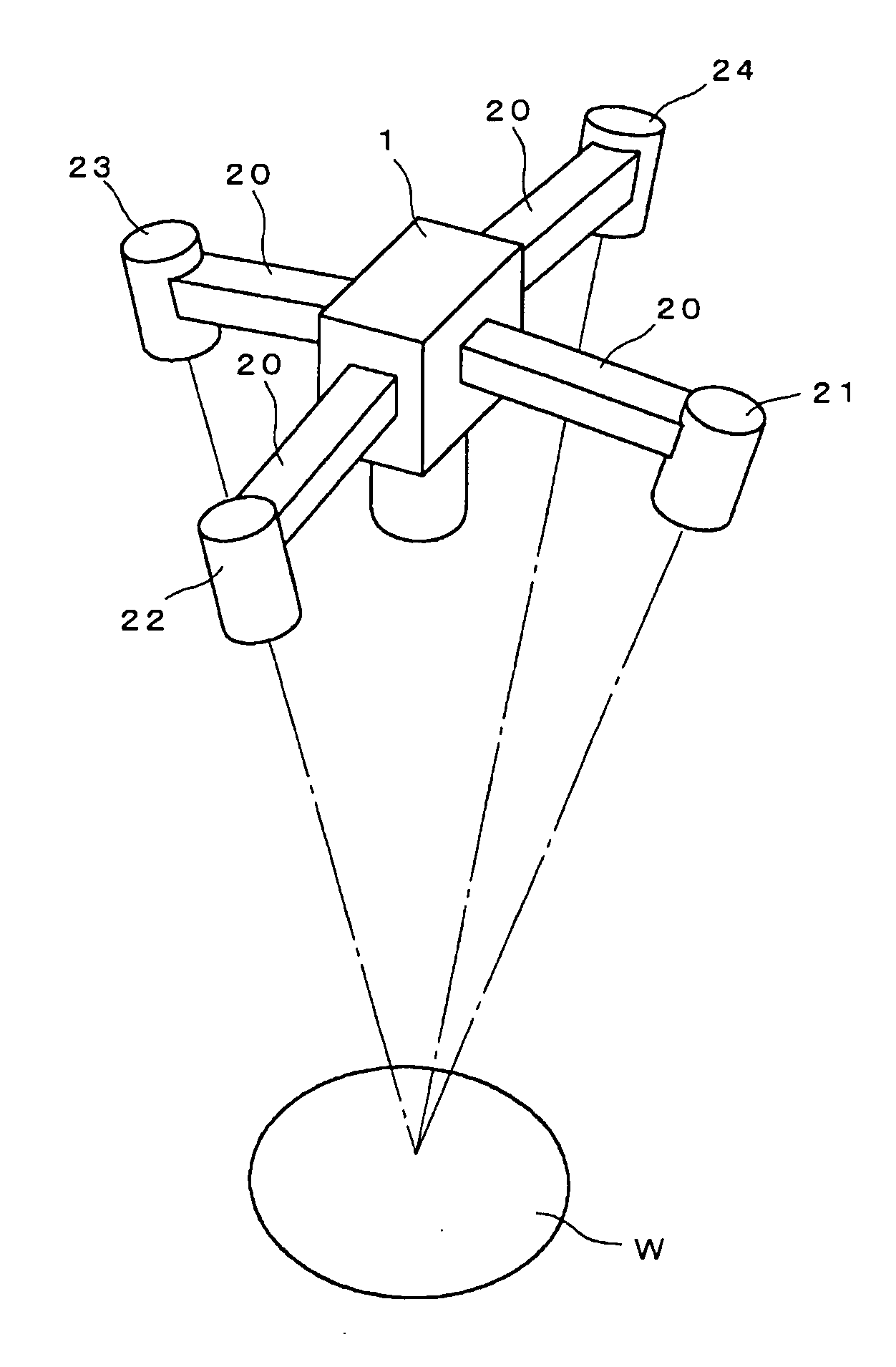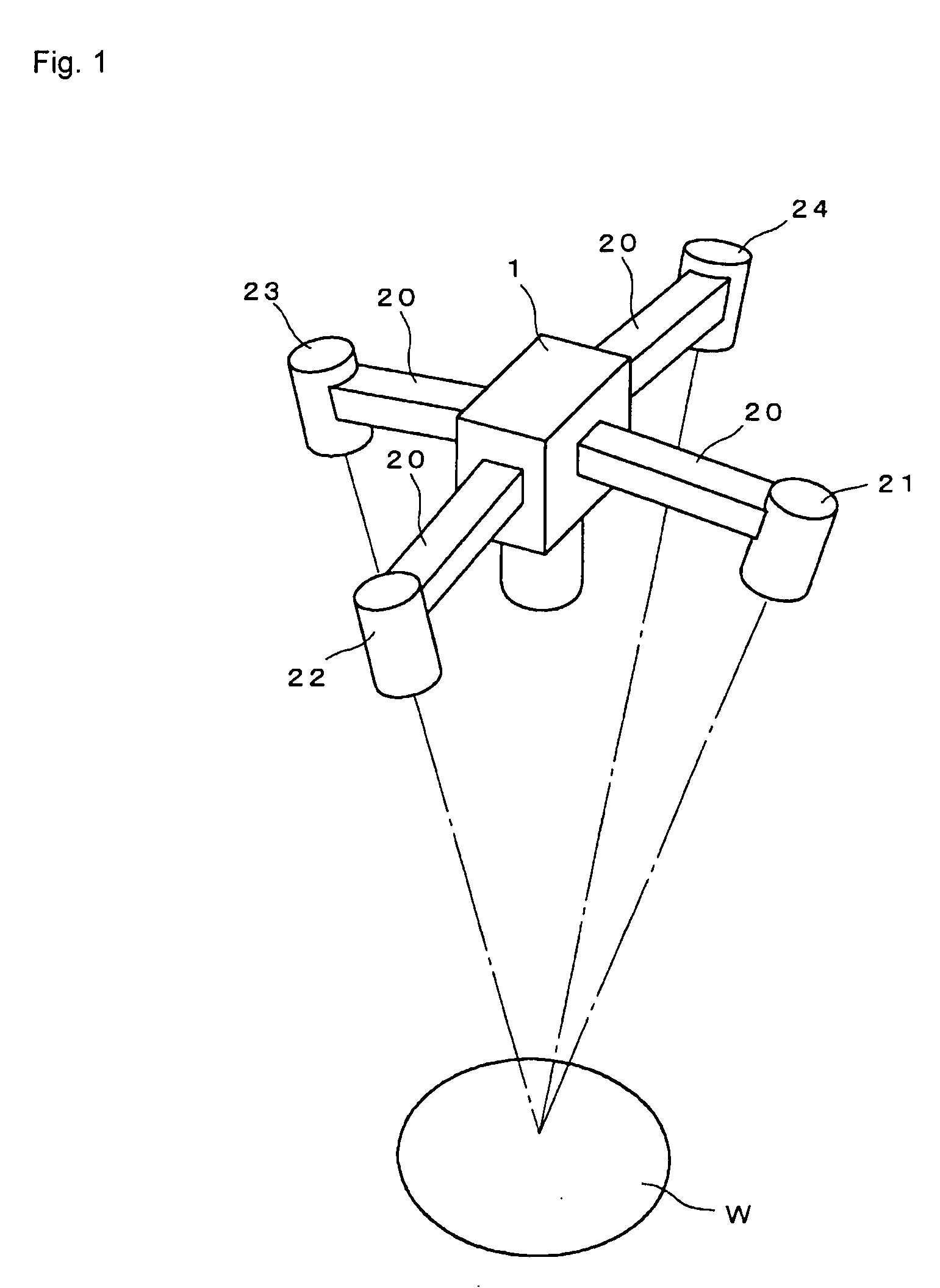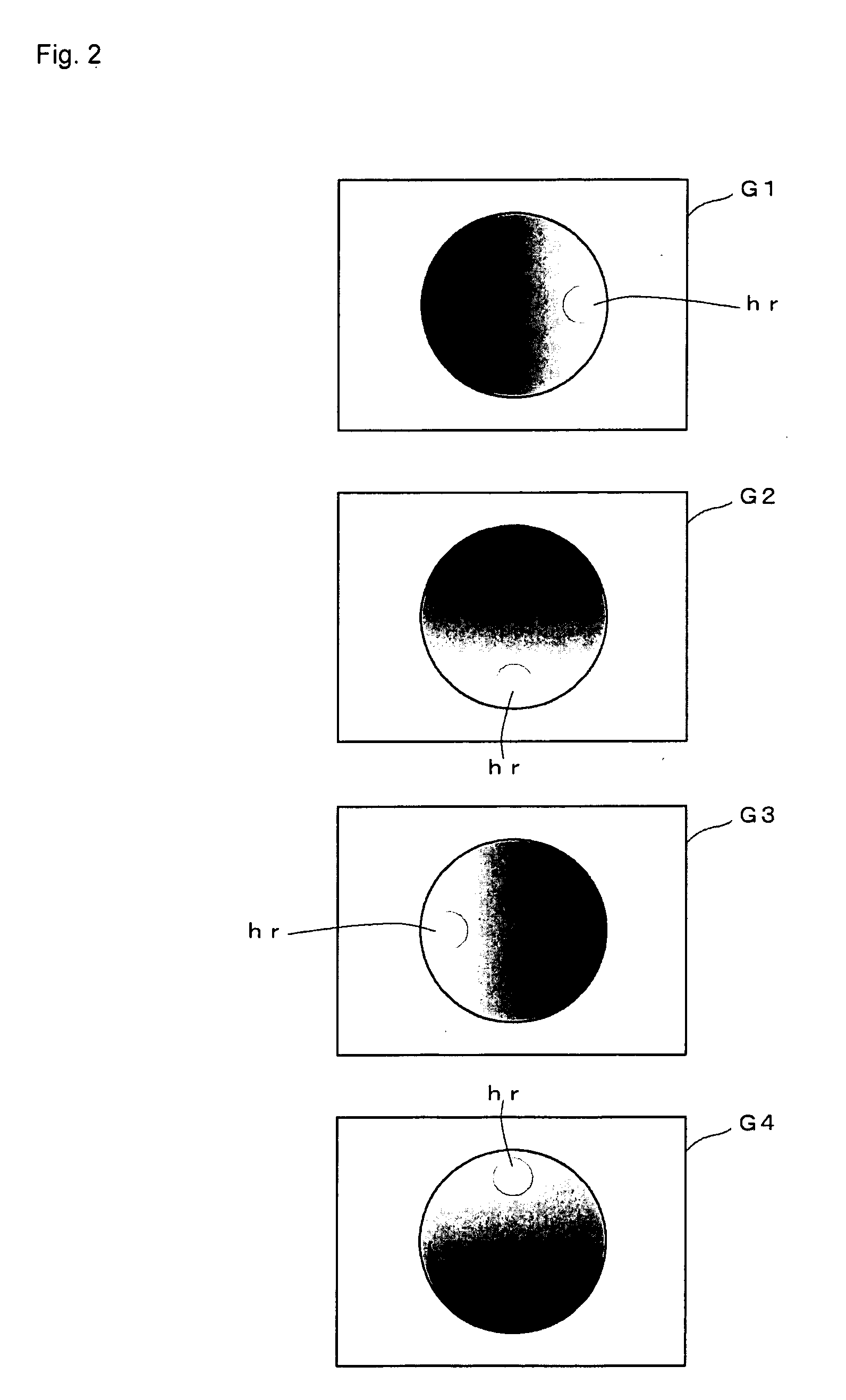Image Processing method and image processor
a processing method and image technology, applied in the field of image processing, can solve the problems of requiring enormous efforts, difficult for a first-timer to set the illumination condition, and the algorithm becomes complicated, so as to reduce the cost of manufacturing the processor, suppress the capacity of data to be processed, and accurately extract an area
- Summary
- Abstract
- Description
- Claims
- Application Information
AI Technical Summary
Benefits of technology
Problems solved by technology
Method used
Image
Examples
first embodiment
(i) First Embodiment
[0087] In the present embodiment, as shown in FIG. 4, one out of the three components nX, nY, nZ of the normal vector n* is used as the one-dimensional information.
[0088] This one-dimensional information is useful in extracting inclination of the surface work along any of the axes X, Y, Z.
[0089] For example, as shown in FIG. 5, when the X-axis is set in a direction along a width direction of a cylindrical work W1, the Y-axis is set in a direction along a length direction of the work W1, and the Z-axis is set in a direction along a height direction of the work W1 with respect to the work W1, it is possible to obtain an image reflecting a change in inclination angle of the surface of the work W1 by setting the component nX of the X-axis of the normal vector n* as the one-dimensional information.
[0090]FIG. 6 shows an image generated by the component nX in the X-axis direction in the setting example of FIG. 5. It is to be noted that also in the present embodiment,...
second embodiment
(ii) Second Embodiment
[0094] In the present embodiment, as shown in FIG. 7, a direction shown by an arbitrary vector A* of the space coordinate system is considered as a reference direction, and the length U of a projection pattern obtained when a normal vector n* is projected in the reference direction is used as the one-dimensional information.
[0095] The one-dimensional information U can be used for example for a process of detecting a region the inclination of which against the X-Y plane is in a prescribed angle range out of regions on the surface of the work W. For example, the one-dimensional information U of each pixel is obtained with the normal line direction of the level plane having a reference inclination taken as the vector A*, and an assembly of pixels with the U values exceeding a prescribed threshold can be detected as a target region.
[0096] It is to be noted that the one-dimensional information U can be obtained such that the vector A* is taken as a unit vector and...
third embodiment
(iii) Third Embodiment
[0097]FIG. 8 shows an example of obtaining angle information on the normal vector n* as one-dimensional information. In the present embodiment, an angle θ of the normal vector n* against the X-Y plane and an angle φ of the normal vector n* against the Y-Z plane are obtained. It should be noted that the angle θ is obtained as an angle of a projection pattern against the X-axis when the normal vector n* is projected onto the X-Y plane, and the angle φ is obtained as an angle of a projection pattern against the Y-axis when the normal vector n* is projected onto the Y-Z plane.
[0098] The angle θ is considered to represent the direction of the normal vector n* when the vector is seen from the top, i.e., the direction of the normal vector n* having been projected onto the X-Y plane. The other angle φ is considered to represent the openness degree of the normal vector n* against the level plane (X-Y plane).
[0099] Also in the case of using the above angle information ...
PUM
 Login to View More
Login to View More Abstract
Description
Claims
Application Information
 Login to View More
Login to View More - R&D
- Intellectual Property
- Life Sciences
- Materials
- Tech Scout
- Unparalleled Data Quality
- Higher Quality Content
- 60% Fewer Hallucinations
Browse by: Latest US Patents, China's latest patents, Technical Efficacy Thesaurus, Application Domain, Technology Topic, Popular Technical Reports.
© 2025 PatSnap. All rights reserved.Legal|Privacy policy|Modern Slavery Act Transparency Statement|Sitemap|About US| Contact US: help@patsnap.com



